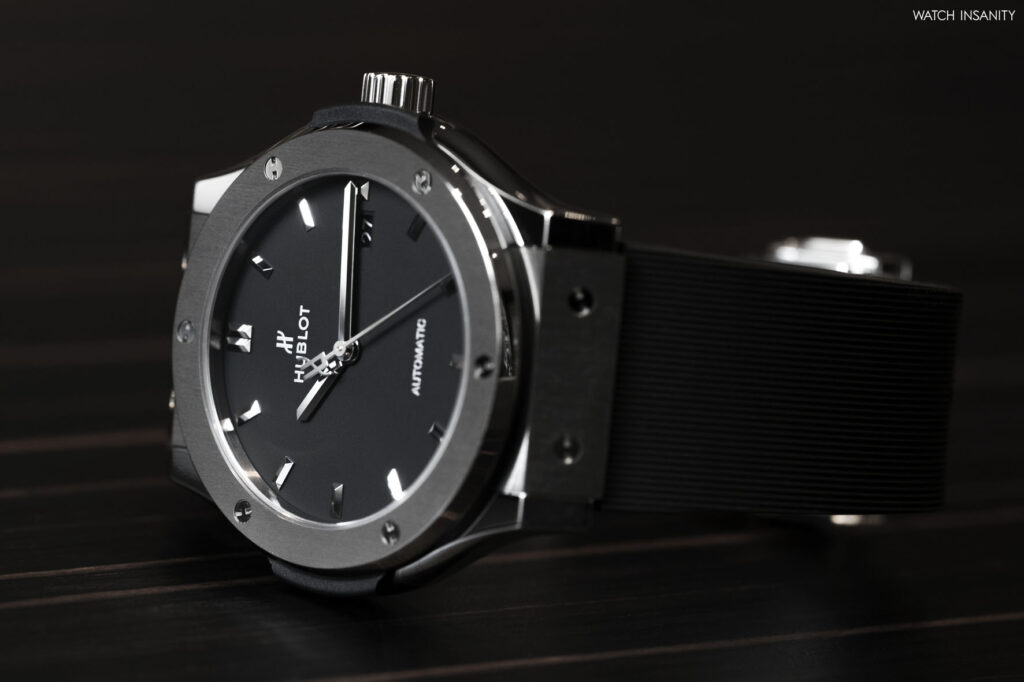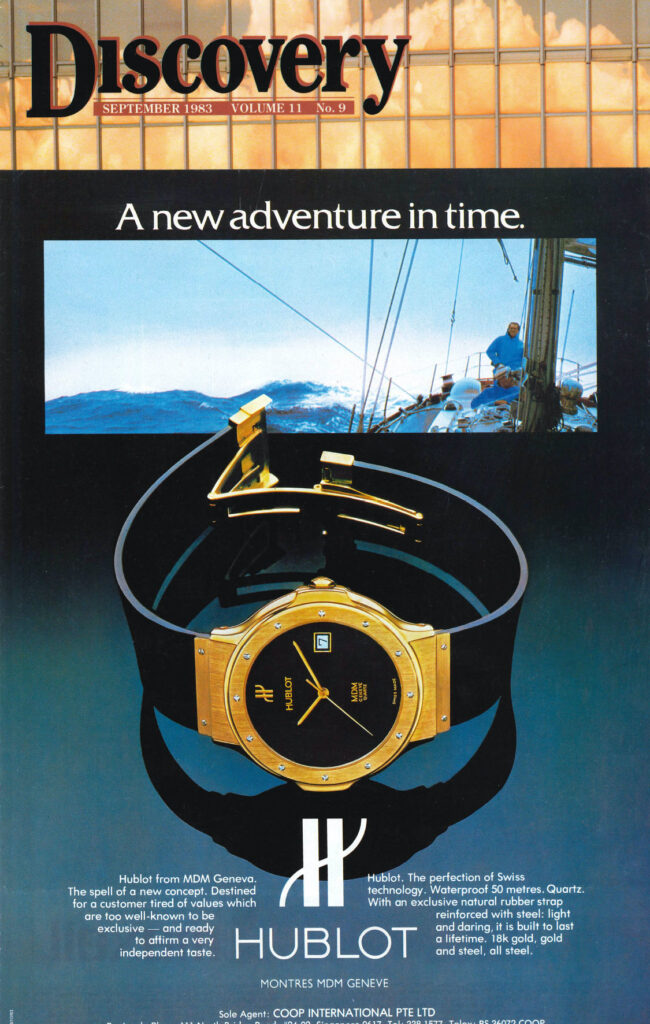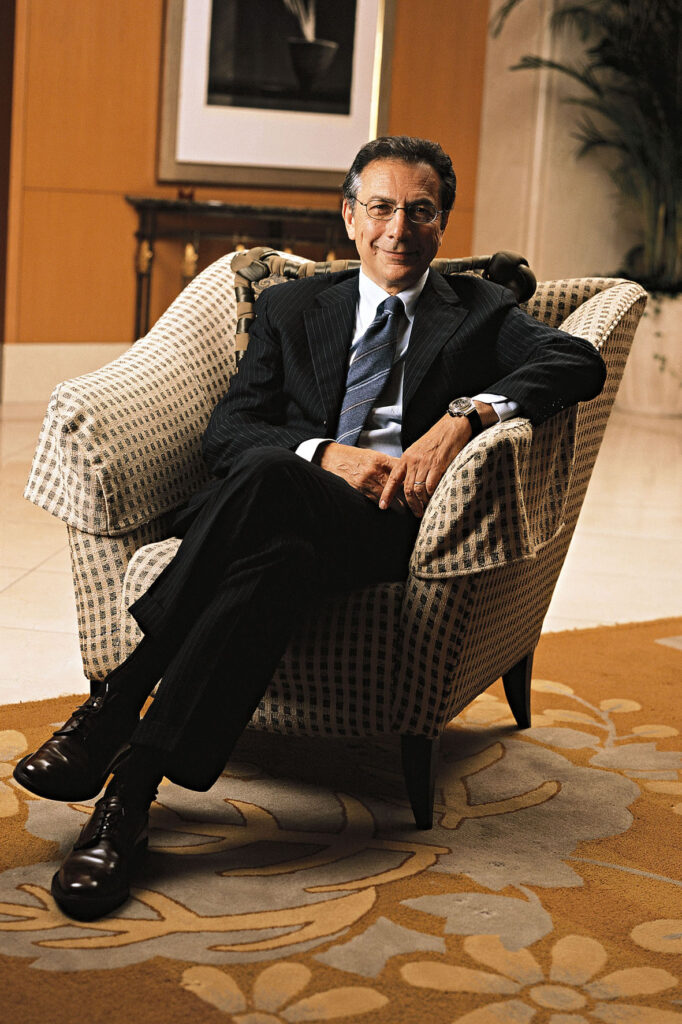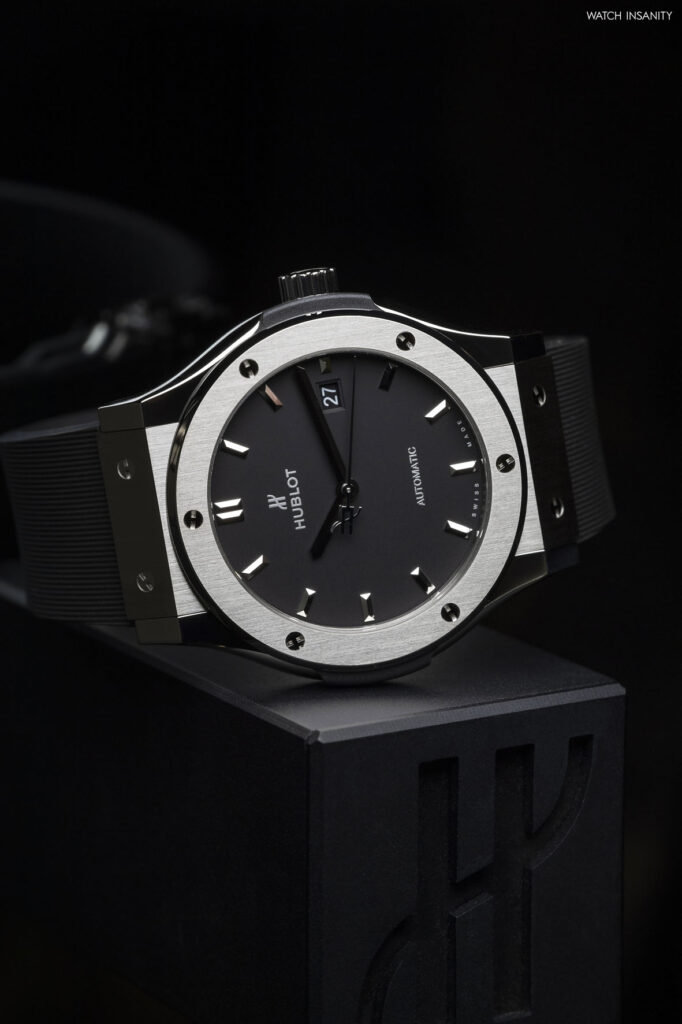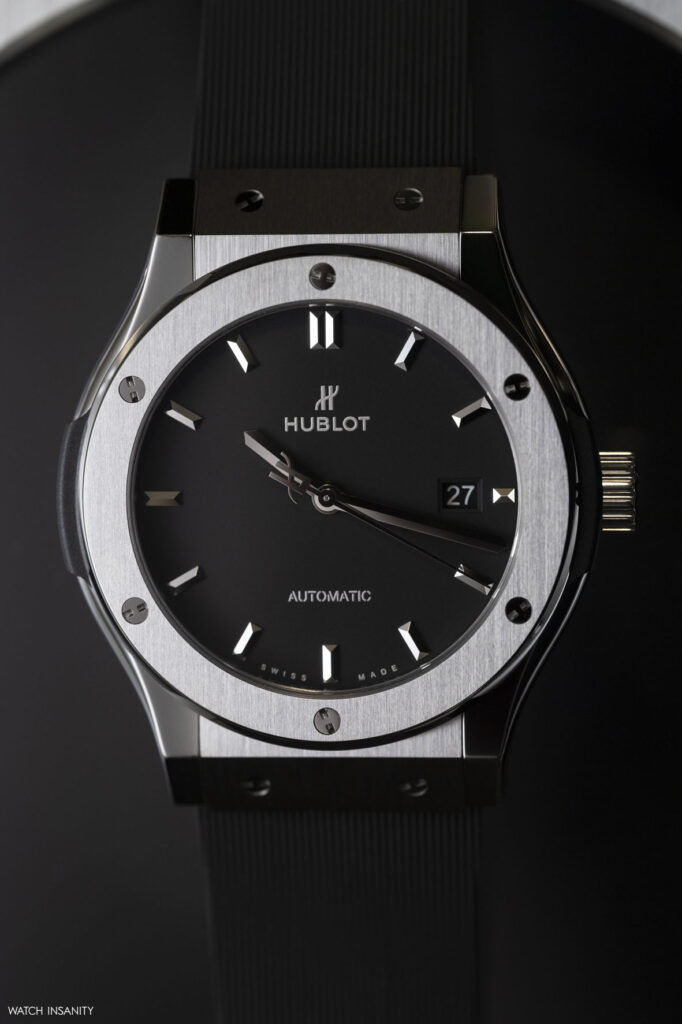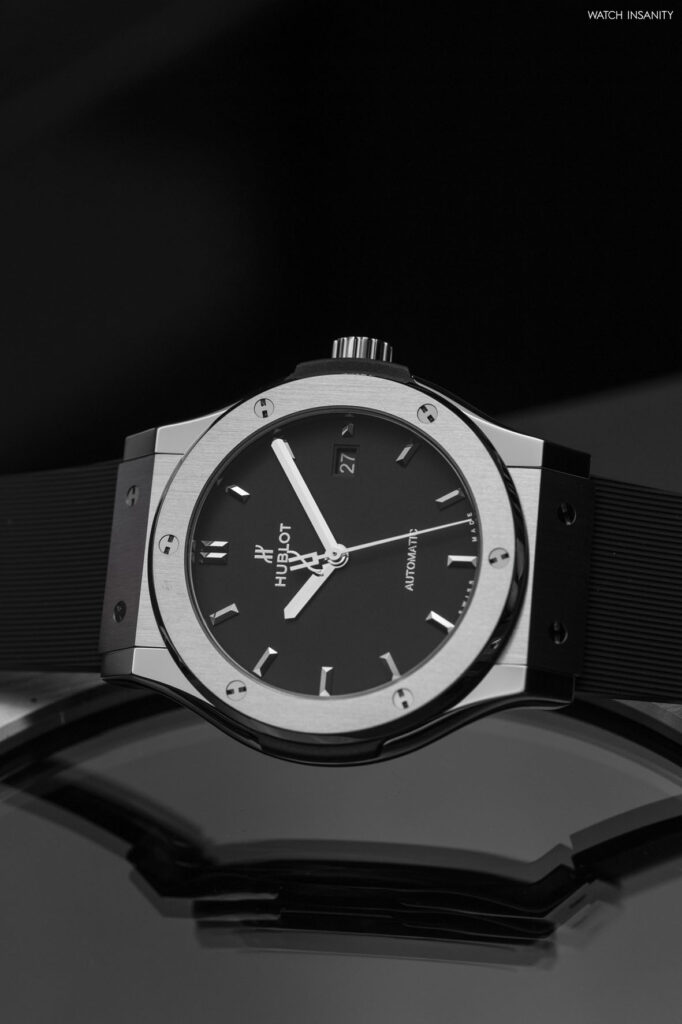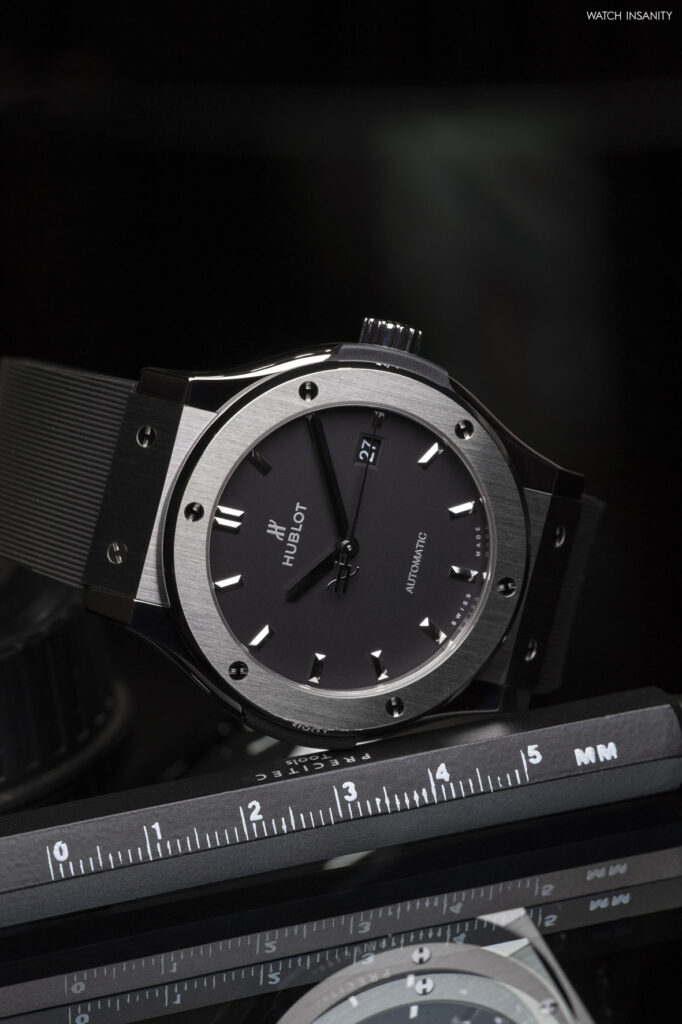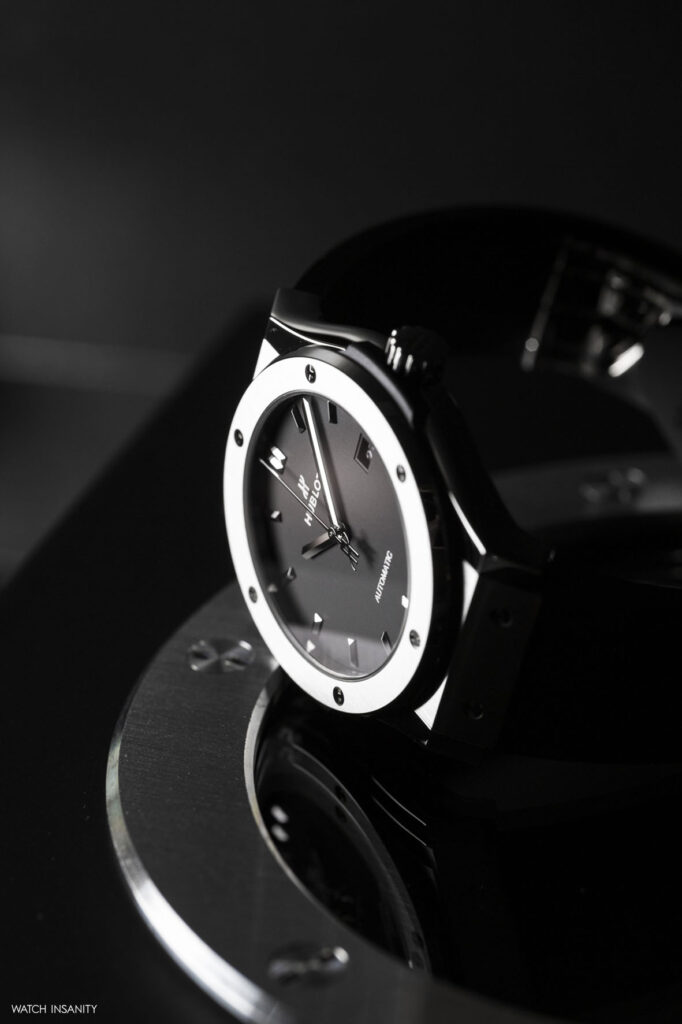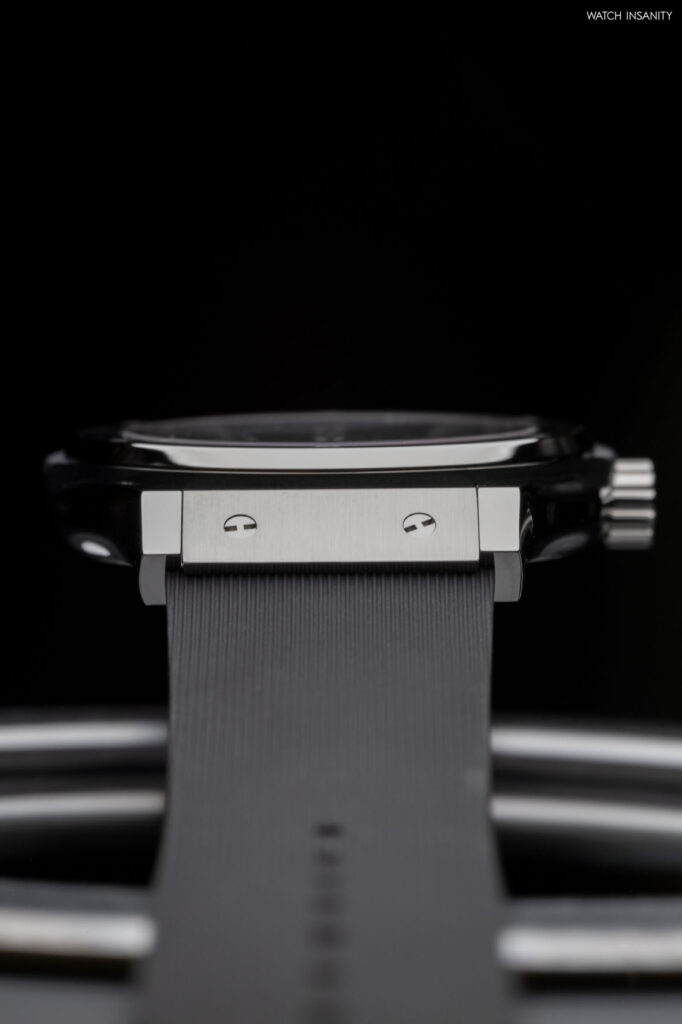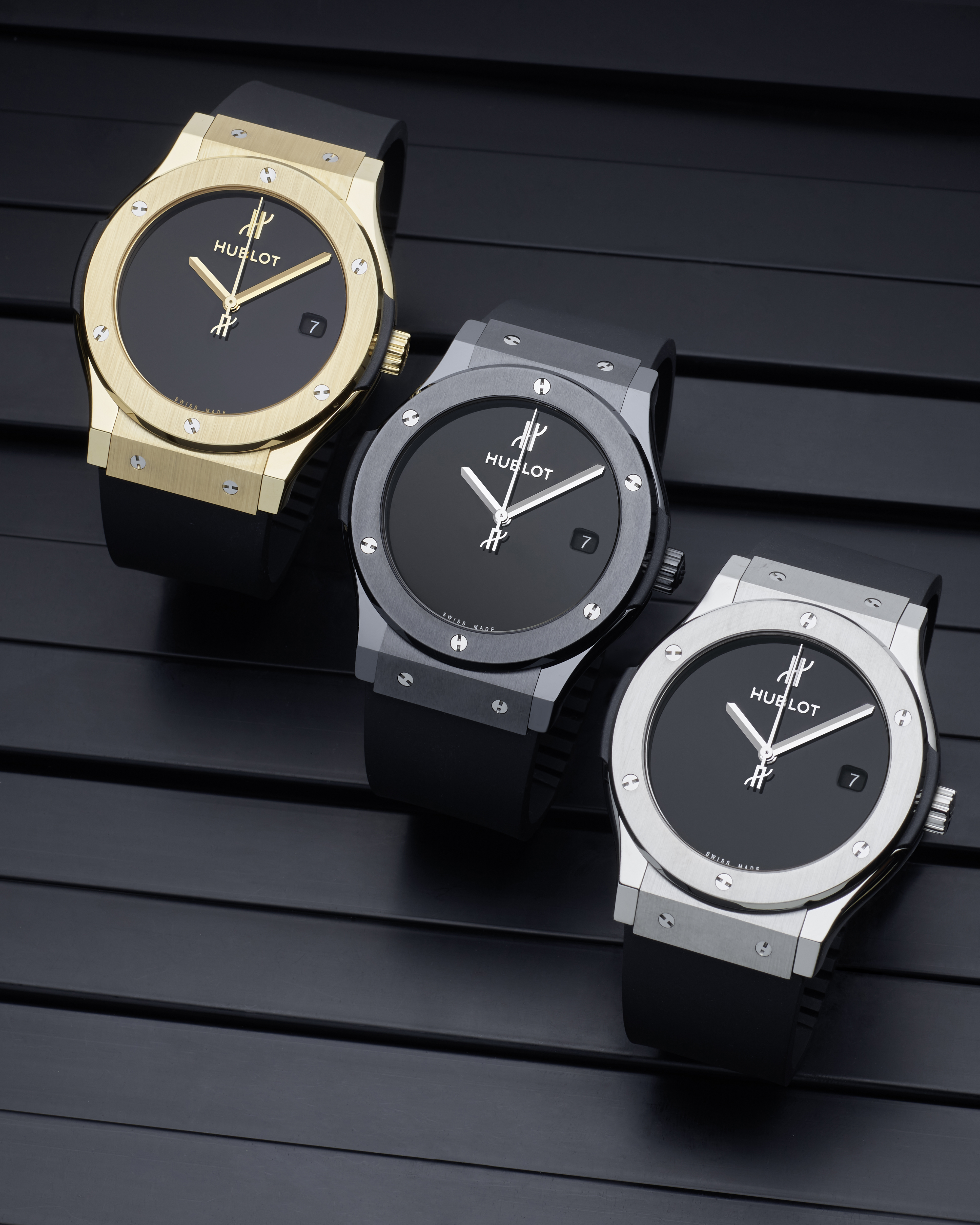Classic Fusion 42 mm: Hublot’s Quintessence 
21 March 2022Each brand that belongs to the fine watchmaking world has a model as its symbol, the timepiece that embodies its spirit and philosophy. For Hublot it is the Classic Fusion. A watch that comes from afar, emblem of the art of fusion that has been the brand’s payoff since 2004, when Jean-Claude Biver became CEO.
Carlo Crocco passed on that role to him. Crocco founded the brand in 1976. Hublot was his great intuition; after leaving the Binda Group, he moved to Switzerland to found the MDM brand, acronym of Marie-Danielle Montres, inspired to his wife’s name. He wanted to give life to something that did not follow the traditional patterns and rules of classic watchmaking.
CLASSIC ORIGINAL – THE BEGINNING
To do so, he took inspiration from his love for boating, and in 1980 he created the watch that would forever mark the brand’s DNA. The name Hublot comes from the French word for the boats’ porthole, the shape that Crocco had in mind when he developed the idea of his first timepiece, the Classic Original. The “father” of modern Classic Fusion.
Round case, clean dial and a bezel fixed with twelve screws that really looked like a porthole. And then a feature that soon made it unique: a rubber strap combined with a gold case. A courageous choice, because rubber was usually used in technical watches or in low quality timepieces: combining it with a high-end watch was a risky move.
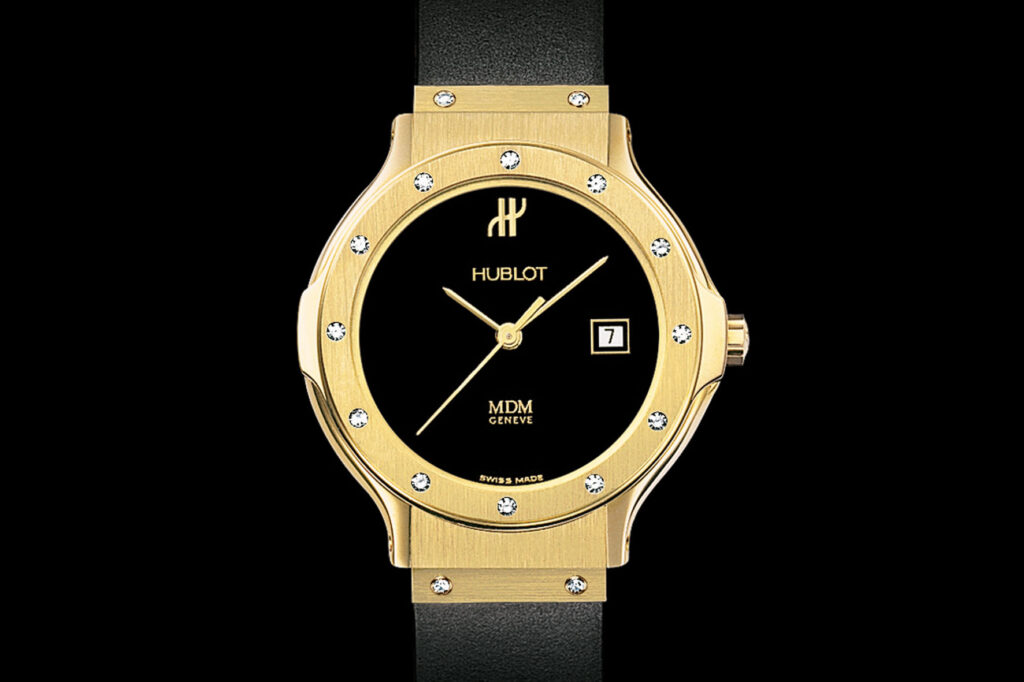
That strap had two details that made it even more unique. Thin metal plates integrated into the rubber, to ensure robustness in fixing it to the case and the buckle, and a delicious vanilla essence fragrance from the Reunion Islands. Not a whim, but a need: that rubber, coming only from Malaysia, had an unpleasant smell which the manufacturing processes of the time couldn’t completely remove.
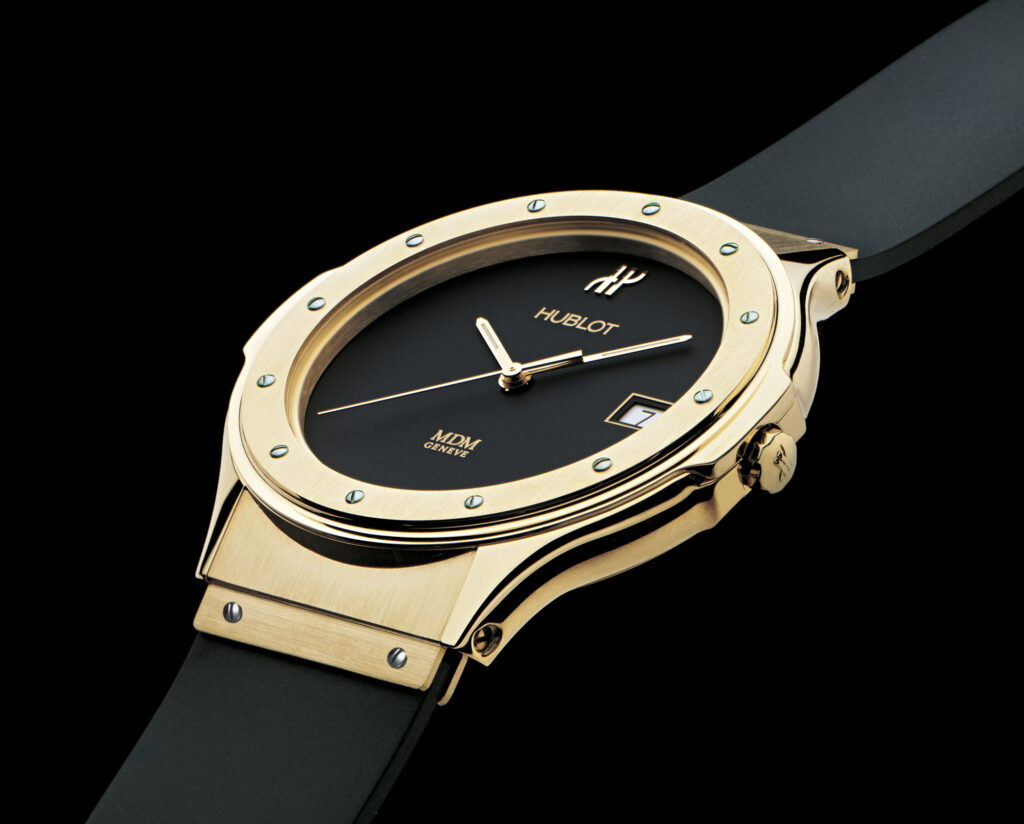
The watch, unveiled at Baselworld in 1980, was not an immediate success. It became a boom when the management at the time had the intuition to make personalities such as King Juan Carlos of Spain and Princess Caroline of Monaco wear it. In short, the Classic Original became “the kings’ watch,” ushering in a strategy of positioning on celebrities’ wrists that still characterizes the brand today.
HUBLOT’S BIG LEAP
Crocco met Biver well before he joined Hublot, when he set an agreement with him to distribute Blancpain watches in Italy and Spain. Biver at the time was in charge of Blancpain and had managed to transform both Blancpain and Omega into commercial successes. He was the right man to help Hublot make the definitive leap into the Olympus of contemporary watchmaking.
Biver’s strategy was simple: to revolutionize the concept of the watch as the first Hublot timepiece did twenty-five years earlier, without distorting the soul of that timepiece with a rubber strap. That soul has reached today’s Classic Fusion and beyond.
In an interview with “Europa Star”, a magazine dedicated to fine Swiss watchmaking, Biver explained his philosophy for the relaunch of the brand, based on the concept of fusion that would become the heart of Hublot: “Our ambition is to become the reference for fusion in watchmaking. It is our religion. We want to develop this concept of fusion. We want to promote fusion and demonstrate the richness that it conveys. I want to become the Pope of Fusion.”
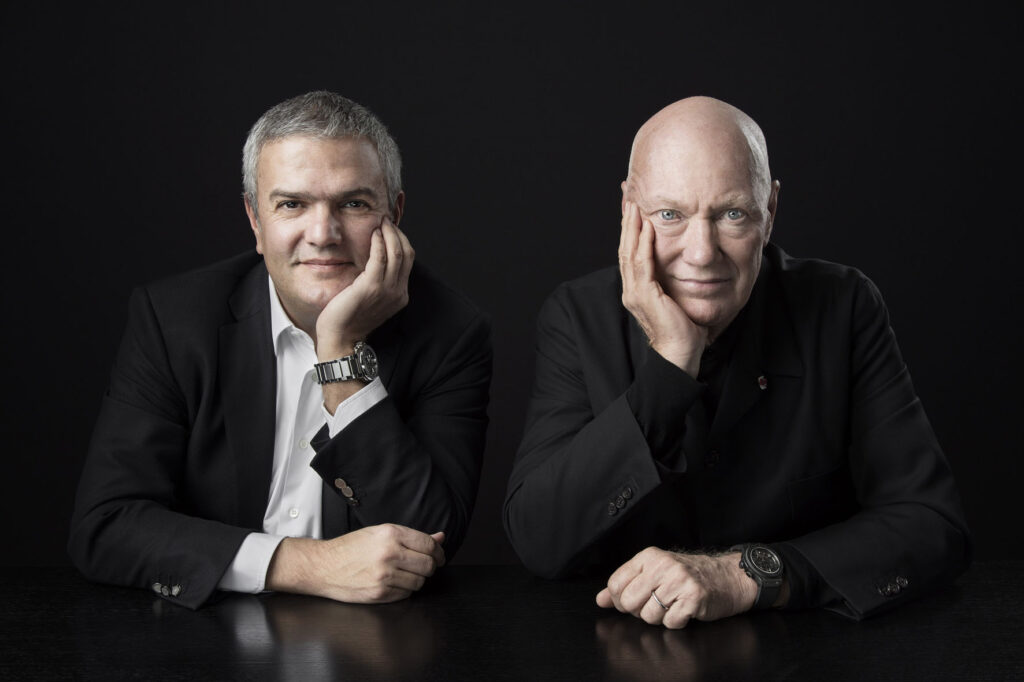
The concept had been realized loud and clear, even when Hublot was sold to LVMH in 2008. This concept became immediately familiar, and even more so with the appointment of Ricardo Guadalupe as CEO in 2012(he joined the company in 2004 together with Biver, as general manager), who carried on the original vision conceived in 2004.
AND THEN CAME THE CLASSIC FUSION
The natural consequence of all this is the Classic Fusion, one of Hublot’s best sellers that nods to what was his first ancestor. A piece that is a fusion of materials, styles, technology, watchmaking expertise. A watch that is still firmly in a leading position in the brand’s catalog, thanks also to hundreds of models declined in three hands, chronographs, moon phases and special editions.
Now, at WATCH INSANITY we want to focus on the watch which, in our opinion, is the quintessential reference of the Classic Fusion: the three hands with a 42 mm titanium case. A timeless timepiece that represents all the Hublot codes. Without forgetting the Classic Fusion Chronograph, a true synthesis of sporty elegance.
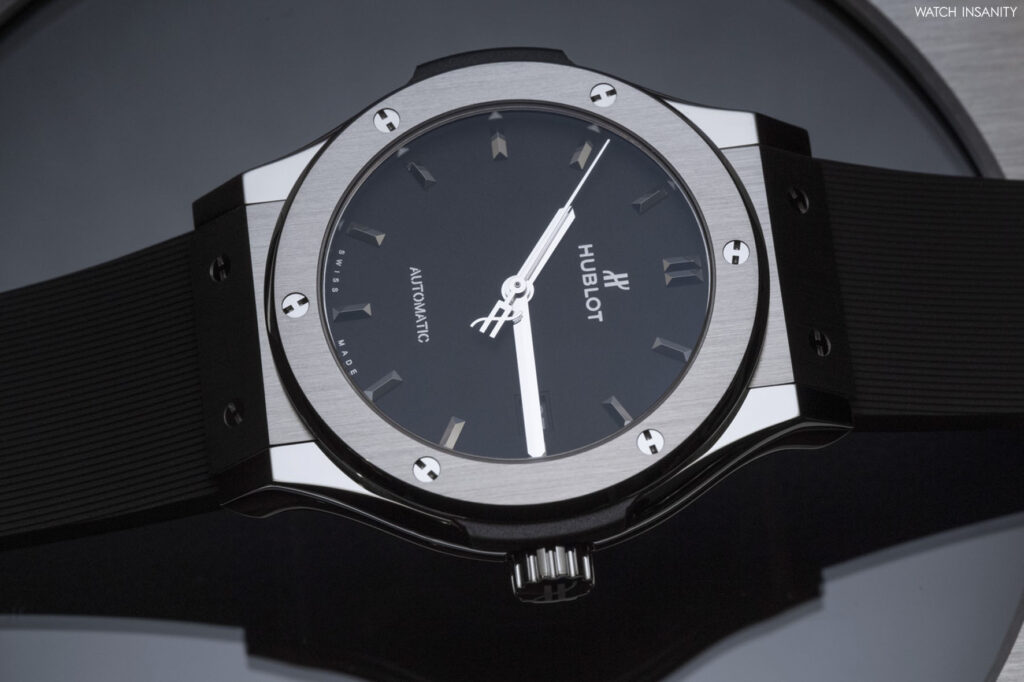
The 42 mm case is the most commensurate to the mood of this watch: it keeps the characteristic shape of the Classic Fusion, with the bezel fixed by the H-head screws, Hublot’s aesthetic signature. Originally they were twelve, but they have long since become six, corresponding to the even indexes of the hours.
Indexes that are applied and faceted, designed to enhance the light and stand out on a dial which, in its purest version, comes in a very deep matte black. Together with the rubber strap, the titanium case makes the watch very light on the wrist. A lightness that, together with the only 9-mm-thin case, makes it extremely wearable and versatile, both under the cuff of a shirt and with a less formal look.
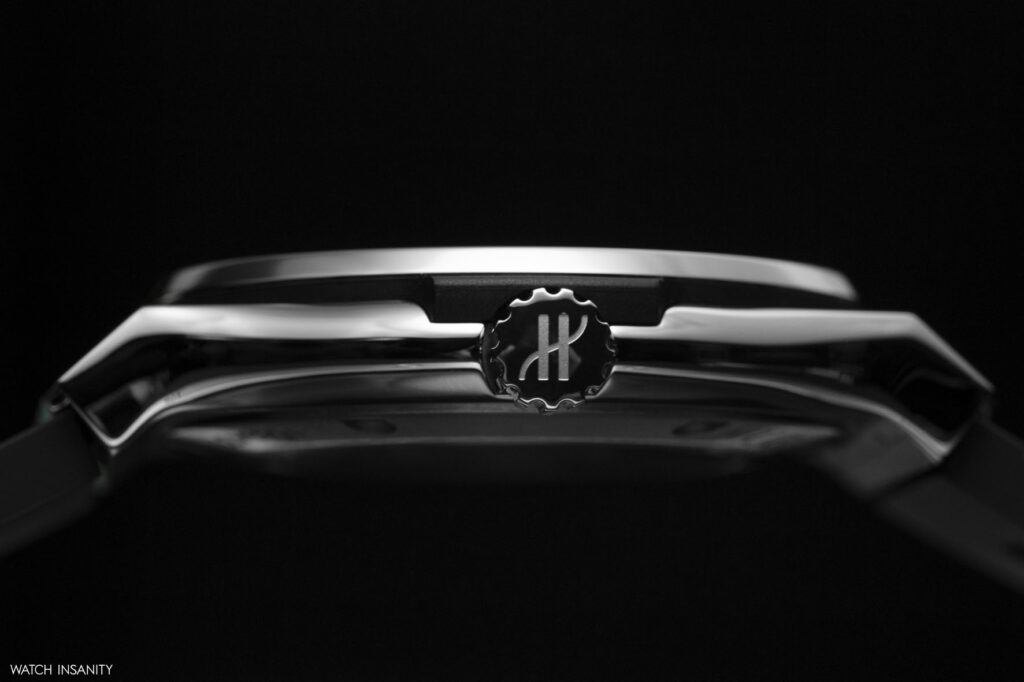
The lugs of the Classic Fusion 42 mm deserve a mention. As in the original from the 1980s, they are very short, curved, and make the rubber strap fit as an integrated bracelet, making the watch enveloping and suitable for many wrist sizes.
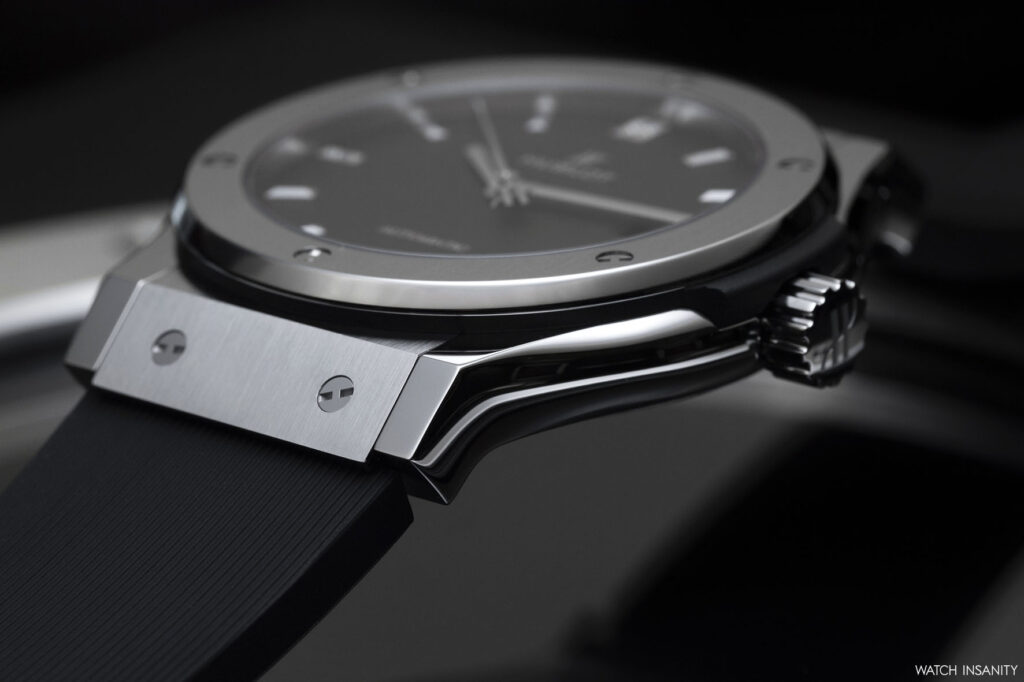
HUBLOT CLASSIC FUSION: PLEASURE TO PLEASE YOU
Aesthetically, the watch is impeccably finished, with cross-references between finishes that catch the eye. The case alternates glossy finishes on the sides and vertical satin finishes on the lugs; the same glossy satin alternation is on the bezel, whose vertical brushing contrasts with the almost mirror-polished side.
The vertical finish extends directly from the lugs to the strap, fixed to them with two H screws: the rubber is decorated vertically with thin ribs that run along its whole length up to the folding buckle. The buckle is made in the same material as the case and has the same finishes; it is firmly anchored to the strap with two H screws; perhaps it would have been better to use a butterfly clasp instead of the classic folding buckle: in addition to recalling that of the Classic Original, it would have given greater aesthetic continuity to the strap.
THE MOVEMENT AND THE DIFFERENT REFERENCES
The movement that drives the Classic Fusion 42 mm is the automatic caliber HUB1110, based on the Sellita SW300-1. It has 42 hours of power reserve and beats at 28,800 vibrations/hour. A reliable movement, suitable for a watch that wants to match elegance with sportiness without sacrificing good performance. The caliber is visible through the sapphire crystal of the screwed caseback, unfortunately a bit burdened by the thick bezel ring.
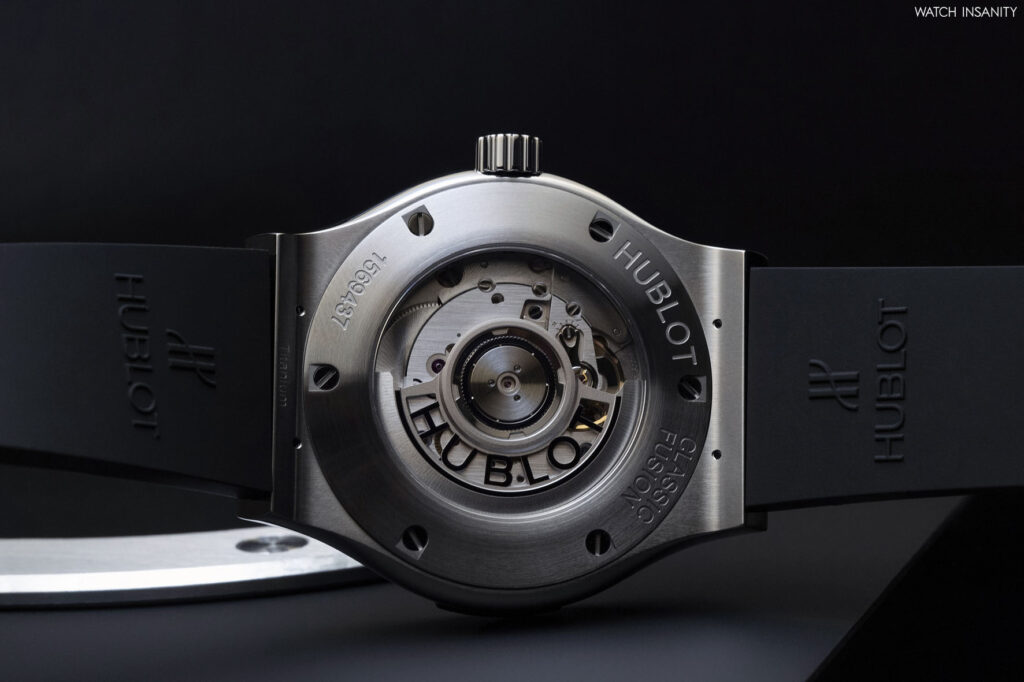
Hublot Classic Fusion is available not only in black and not just in titanium, but in a wide palette of colors and a variety of materials and sizes. The 42, 45, 38 and 33 mm cases are available in titanium and king gold, king gold, ceramic, ceramic and king gold or with a diamond bezel. The dials are also in blue, green, gray or opaline.
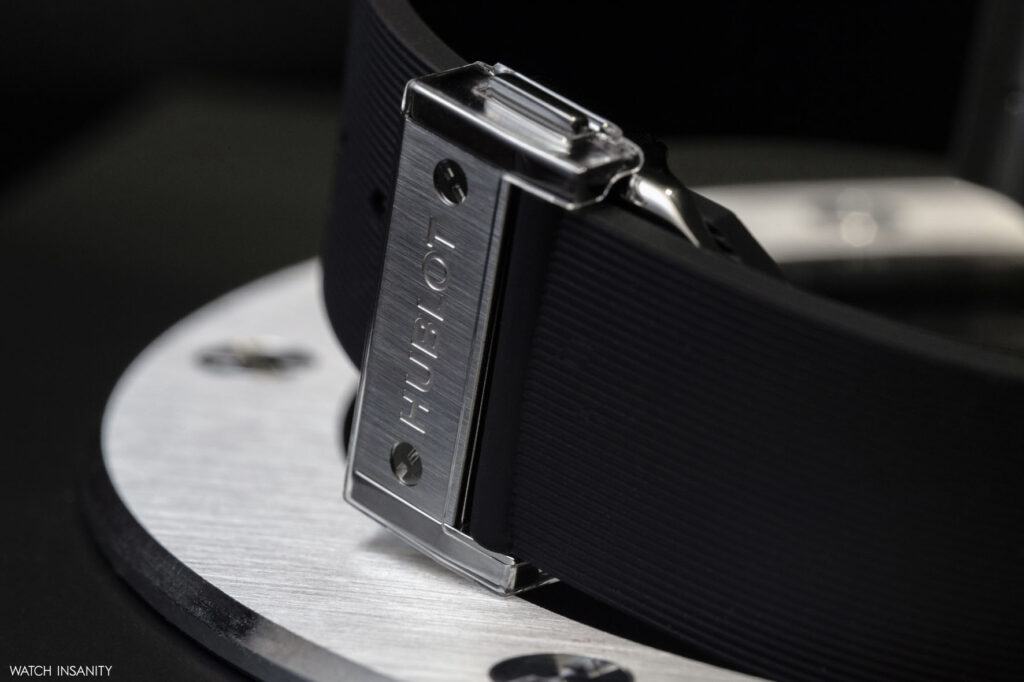
Among the many references, it is worth mentioning the limited edition Hublot Classic Fusion 40 Years Anniversary, presented in 2020 to celebrate the Classic Original’s 40th anniversary. Black dial without indexes, date window at 3 o’clock, rubber strap and butterfly buckle, it recalls its ancestor in almost every detail, apart from the screws of the bezel (6 and not 12), the diameter of the case (45 mm against the original 39) and the HUB1112 automatic movement (it was quartz 40 years earlier).
Limited edition, we said: 100 pieces with yellow gold case, 200 in titanium and 200 in ceramic. Sold out in a very short time, of course. Today, those who want to buy a Hublot Classic Fusion (the 42 mm in titanium costs 7,200 euros) must necessarily look at the current collection and will have dozens of references to choose from: wearing a symbol on your wrist can also become a pleasant problem.
By Davide Passoni
